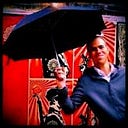A few years ago, the ECF Foundation took a unique approach when it launched a new fund for groups across Europe. Instead of the usual call for fully formed ideas, they invited applications for creative ways of building communities that still needed to be fullydeveloped. This innovative strategy sparked a wave of fresh and unconventional proposals.
They then invited the top 25 ideas to a three-day incubator in Marseille, where they provided inspiration through talks, tours around the city’s neighbourhoods, and training in speaking, prototyping, and media. Most importantly, they empowered us to find ideas and people who shared similar values or principles and then hack our initial ideas to develop new collaborative projects.
Our project, ‘Hack your borders,’ was a testament to the power of ‘networked learning’. It wasn’t just about learning between the developers or participants; it was about understanding and adapting to the systems and ecosystems of each project’s operating city. Whether it was Amsterdam, Barcelona, Berlin, London, Madrid, Sevilla, Vilnius, or Warsaw, our projects thrived on this interconnected learning.
“Critical Observer” — Although the founder of Open Source Public Space Devices, Paco Gonzalez, curates the project and supports the practitioners taking part in it, within each activity, he positions himself organisationally and physically as a “critical observer” so that he can evaluate the process the practitioners are facilitating. Through the “Hack (y)our Borders Pot Luck Dinners”, I also prepared the setting by inviting specific individuals from different cultural practices with a shared interest in public space, using the excuse of the guests Paco and Jekaterina introducing their projects, as a way to make sense of how people negotiate the use of time to tell their story, exchange insights and influence each other.
The ‘Field Storyteller’ played a crucial role in our project. While the blogger of El Canto wasn’t directly involved in the neighbourhood activities, they set the stage for the researchers to delve into the neighbourhood’s dynamics. During the activity, they documented the actions and interactions of the different actors, providing a valuable perspective on the project’s interplay.
Can Battlo
Each building houses a commission where people come together to develop the issue the commission is focused on, whether on community gardening or inclusive design. This sense of community ownership is what makes the ‘Can Battlo’ project so impactful.
The parking space, which sits in the centre of the neighbourhood, could be perceived as being installed there to divide people and to create disruption. It also creates boundaries between the spaces reserved in green for residents and yellow for people just passing by.
The “half pipe” seems to have been chosen, as it’s a space where people perform and, ideally, people come to watch and learn. It’s a hybrid infrastructure whose outer layers are hollow so they can be opened up to be used as “meanwhile space” for other activities. It inspires different forms of movement that attract people.
Neighbourhoods
The neighbourhoods we’re working in within each city, from Herne Hill to Can Battlo, are on the edge of towns. They’re not in the countryside, not even in suburbia, let alone inner-city neighbourhoods. They’re areas within sight, visually — through the skyscrapers — and culturally — through the people spilling over into the neighbourhood, both the city centre and the green belt of the city’s outskirts. They are far enough that they have the space and time to reflect and build their own culture, but not close enough that they can easily access the infrastructure positioning within the centre of the city — from free museums to hospitals, but still close enough that they are aware of what they should be entitled to. From this, there may be a greater sense of urgency and unfairness that they want to build their infrastructure while seeing the perverse consequences of urban development and gentrification on the horizon and increasingly creeping up on their doorstep.
Tree
The Hubs are the roots transplanted into the foundation’s tree, which help grow the tree, expand the tree’s territory and negotiate the space between the origins (in effect, the Hubs). That then makes the projects the tree’s flowers, which people on the outside can see growing, depending on where they are about the tree.
